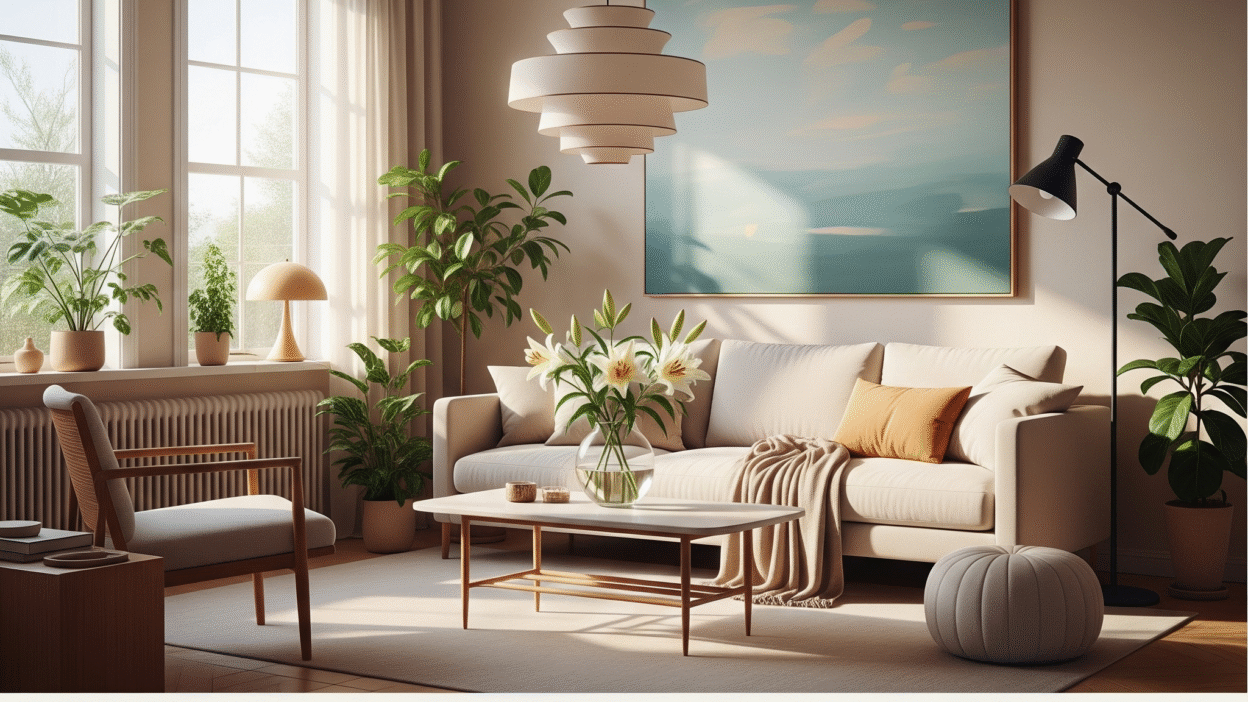When we think about interior design, we tend to imagine mood boards, fashionable chairs, or a rapid DIY makeover show. But true interior design is much more nuanced—it’s a deliberate process that harmonizes creativity with practicality, design with psychology, and beauty with everyday life.
It’s not just about creating a good-looking space—it’s about creating a functional space. And that starts with comprehending how people live.
Designing for People, Not Just Spaces
Interior design begins with people. A great designer doesn’t start with swatches of fabric—they start with questions: How do you live in your house? Do you work out of your dining table? Do you want calm in your bedroom? Energy in your kitchen?
Behavioral design choices form the foundation. A child’s room is built for safety and curiosity. A room for an old person must be comfortable, accessible, and warm. This people-centric approach is what makes excellent interior design invisible—everything just works naturally.
The Rise of Smart and Modern Interior Design in Noida
In rapidly expanding cities such as Noida, space is a luxury. Which is why modern interior design in Noida emphasizes so heavily on multi-functional spaces. Bedrooms function as study rooms. Balconies are used as greenery-filled retreats. Furniture folds away, disappears, or shifts.
Urban residences are changing, and interior design is keeping up. Lightness and fluidity are incorporated into smaller spaces. Intelligent storage, minimal ornamentation, and flexible furniture aren’t trends—they’re answers for actual lives.
Design in Noida is now about functionality without sacrificing fashion. It’s about simplicity, comfort, and maximizing every square foot.
Why Room Colour Selection Is More Powerful Than You Think
Have you ever entered a room and felt instantly relaxed—or uneasy? That’s the strength of color. And this selection in interior design is no coincidence.
Room color selection has an enormous influence on the way we feel in a room. But designers don’t simply select colors for looks—they consider light, space, and mood. A sunny room may require cooler colors. A narrow, dark room can be made to feel spacious with a warm off-white.
In busy cities like Noida, where apartments may feel compact, colour becomes a tool to create openness, peace, or even energy. Soft greens, pale terracotta, muted blues—they’re not just trendy, they’re thoughtful.
Light: The Most Silent Designer
Design without good lighting is like music without rhythm—it feels off. Whether it’s sunlight through a window or warm lamps in a quiet room, lighting defines how a space is experienced.
Interior designers approach light in layers. Natural light is utilized whenever it can—natural light provides mood, energy, and health. Then ambient and task lighting are added in, based on what occurs in each area of the space.
In real terms? That reading nook by your window? It may be warm because the designer considered 4 PM winter light angles. That’s how precise actual interior planning is.
The Psychology Behind Beautiful Interiors
Interior design isn’t just about placement—it’s about psychology. The way a room is shaped, lit, and coloured can calm us down, make us more productive, or invite us to relax.
Designers learn how we react to materials, textures, and composition. Softer fabrics warm a room up. Clean lines clarify. Curved edges are more friendly. Even walking lanes in a room are designed so you never feel claustrophobic or trapped.
This blend of psychology and design makes rooms feel emotionally “right” without you even realizing it.
Where Art Meets Engineering
Interior design isn’t just artistic—it’s intensely technical. It’s about measurements, lighting analysis, space planning, airflow design, acoustics, and so on.
The paint on the wall that doesn’t wear off? That’s material science. The manner in which your bedroom remains cool in the summer? That’s air flow planning. Even your furniture height or door swing direction is computed for comfort.
It’s a thoughtful mix of form and function. Every decision is both a design choice and a practical choice.
Last Thoughts: Design That Doesn’t Feel Like a Room
Next time you enter a room and just feel. right—know that it likely wasn’t happening. It was interior design with care.
particularly in urban spaces, such as in contemporary interior design in Noida, intelligent design makes small spaces feel large, hectic lives feel more relaxed, and rooms feel more human. With meticulous room color choice, lighting, and behavior understanding, interior design transforms into more than aesthetics—it becomes assistance.
It’s not decoration—it’s about designing space that functions beautifully for real people. And that is what excellent design is about.



